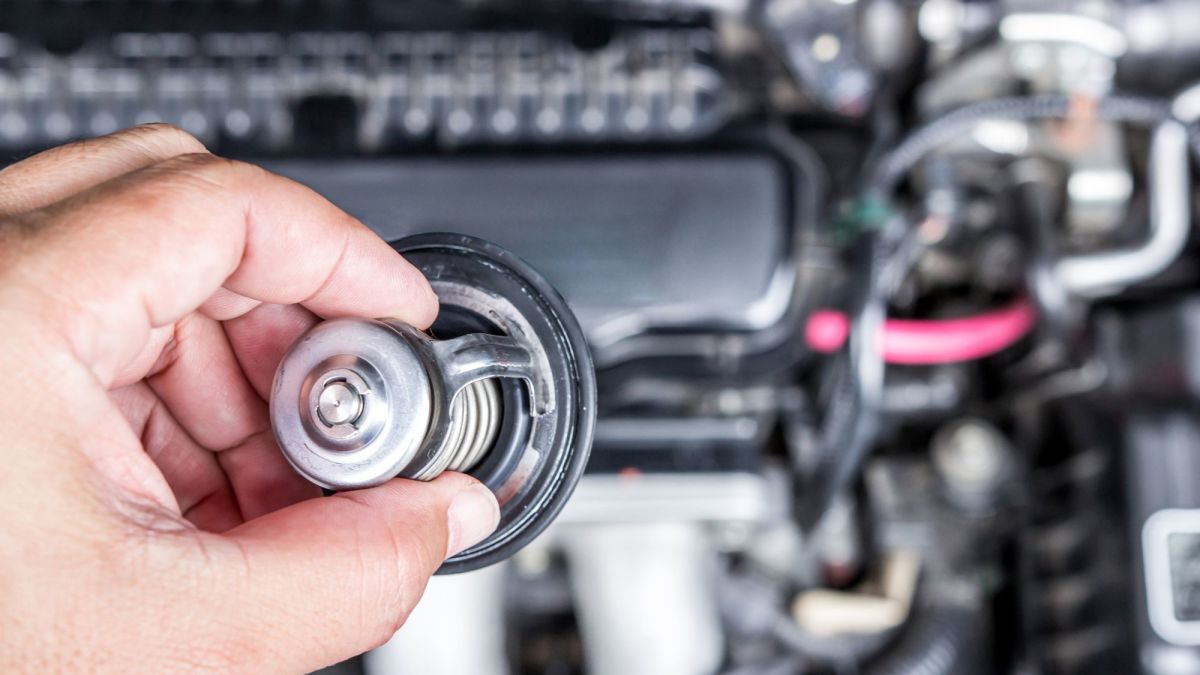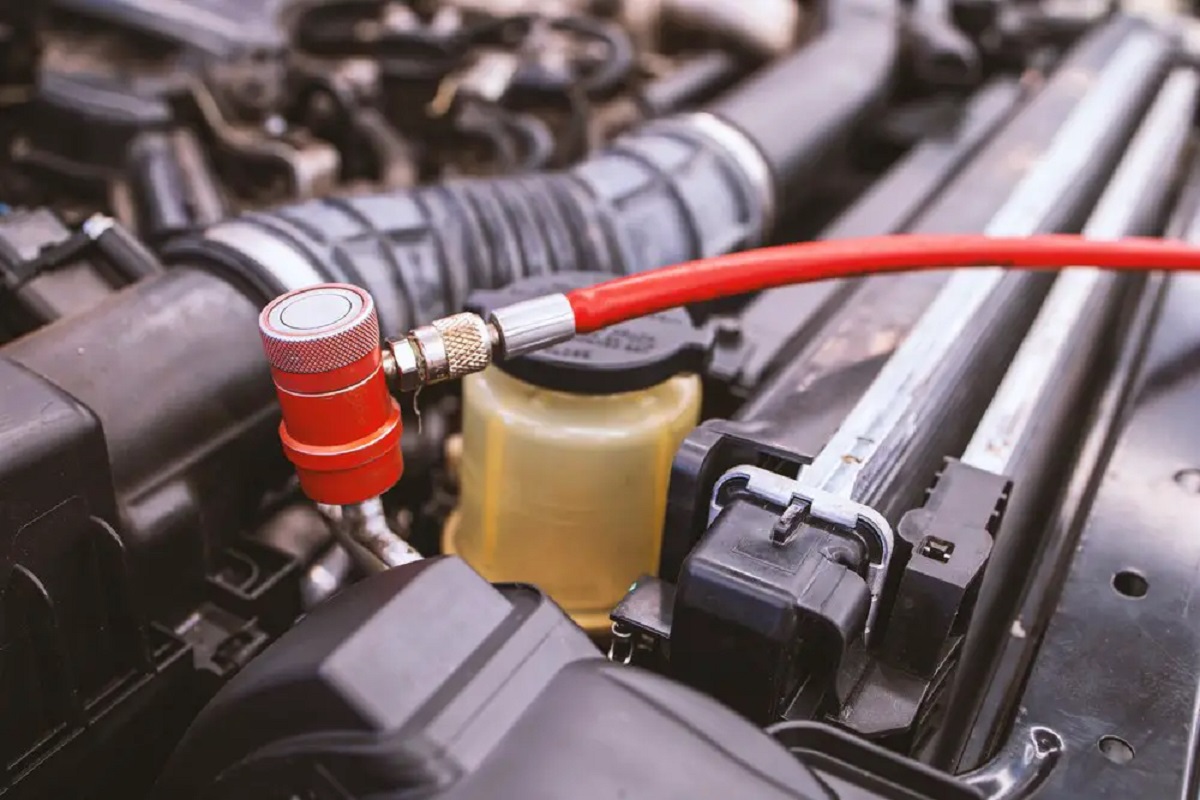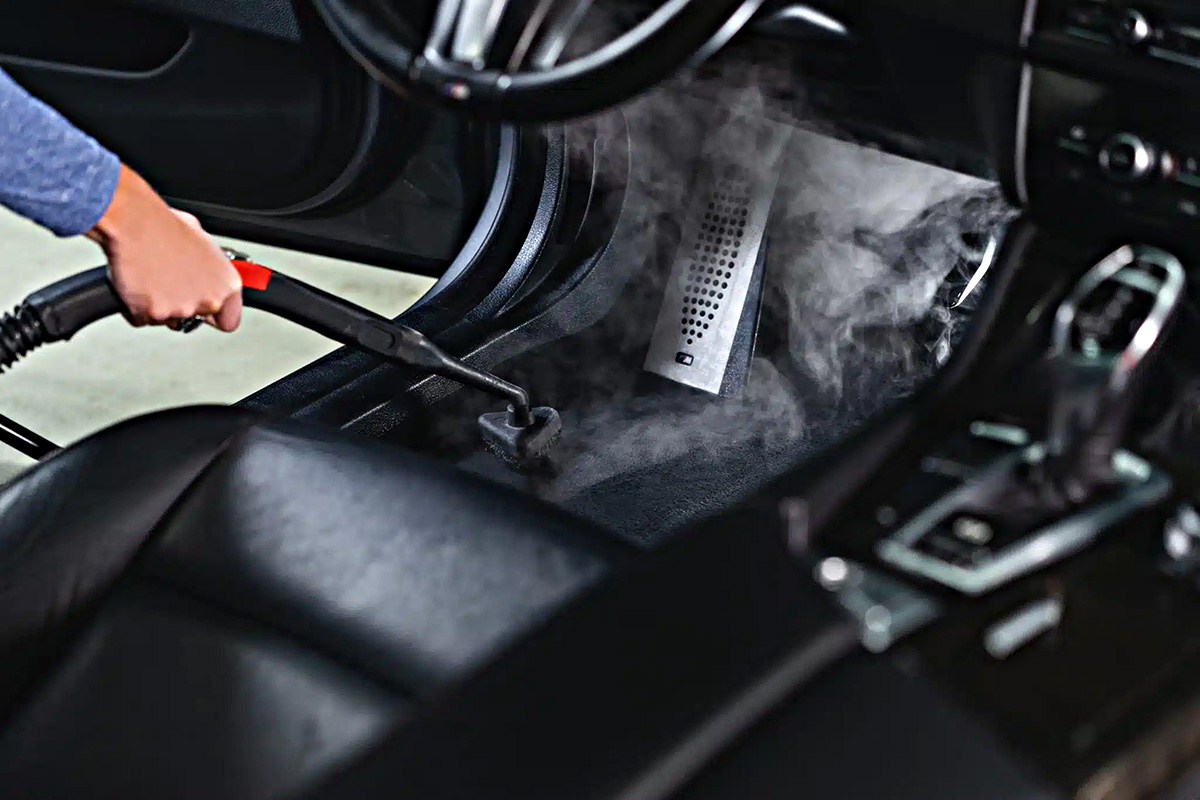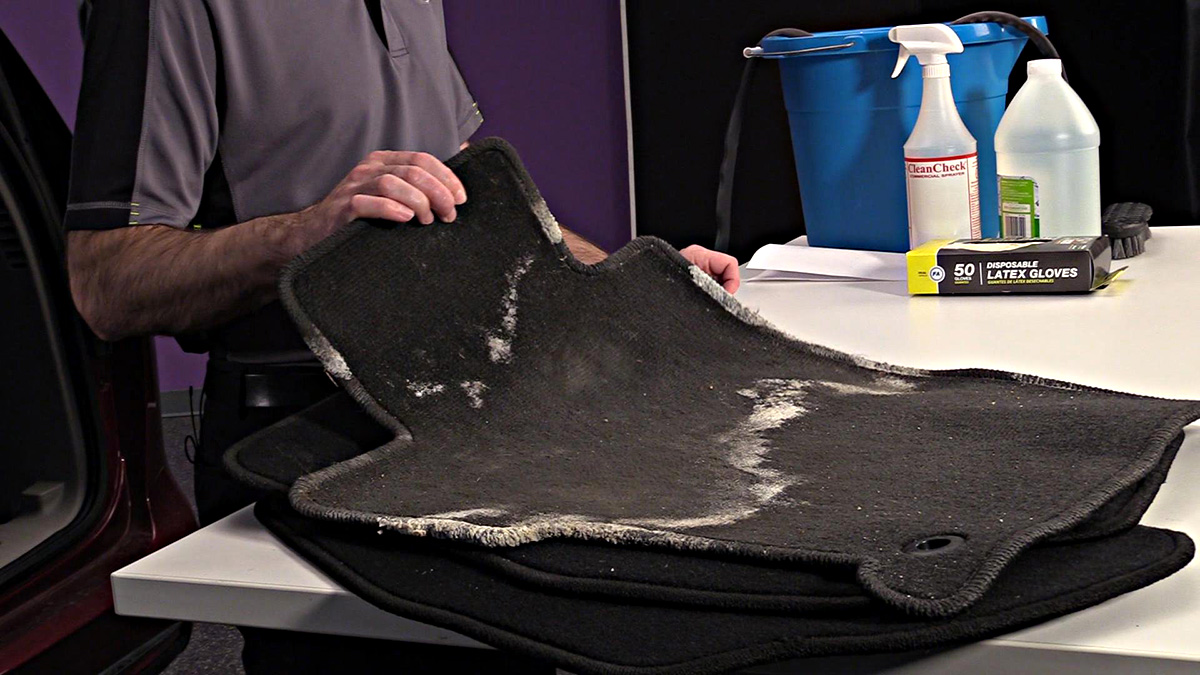Home>Home Appliances>Home Automation Appliances>What Happens If I Remove The Thermostat From A Car


Home Automation Appliances
What Happens If I Remove The Thermostat From A Car
Modified: February 28, 2024
Discover the impact of removing the thermostat from a car and its effects on home automation appliances. Learn how this action can affect your home's comfort and energy efficiency.
(Many of the links in this article redirect to a specific reviewed product. Your purchase of these products through affiliate links helps to generate commission for Storables.com, at no extra cost. Learn more)
**
Introduction
**
When it comes to the intricate dance of components that make up a vehicle, the thermostat plays a crucial role in regulating the engine's temperature. This small yet mighty device is often overlooked, but its absence or malfunction can lead to significant consequences for the engine's performance and longevity. In this article, we will explore the function of the thermostat in a car, the potential repercussions of removing it, and the impact on engine performance. Whether you're a car enthusiast or simply curious about the inner workings of your vehicle, understanding the role of the thermostat is essential for maintaining optimal engine health and performance. So, let's delve into the world of car thermostats and uncover the implications of tampering with this seemingly unassuming component.
Key Takeaways:
- Removing the thermostat from a car can lead to longer engine warm-up times, reduced fuel efficiency, and potential engine damage, compromising performance and longevity.
- The thermostat regulates the engine’s temperature, fuel efficiency, and emissions, playing a crucial role in maintaining optimal performance and safeguarding the engine against damage.
Read more: What Happens If Thermostat Is Not Working
The Function of the Thermostat in a Car
At the heart of a car’s cooling system lies the thermostat, a small but vital component that regulates the engine’s operating temperature. Its primary function is to ensure that the engine reaches and maintains an optimal temperature for efficient and clean combustion. When the engine is cold, the thermostat remains closed, preventing the coolant from circulating through the radiator. This allows the engine to warm up quickly and reach its ideal operating temperature.
Once the engine reaches the predetermined temperature, typically around 195 to 220 degrees Fahrenheit (90 to 105 degrees Celsius), the thermostat opens, allowing the coolant to flow through the radiator. As the coolant passes through the radiator, it dissipates the excess heat, ensuring that the engine remains within the desired temperature range.
By regulating the engine’s temperature, the thermostat contributes to fuel efficiency, emissions control, and overall engine performance. It also helps prevent overheating and ensures that the engine operates at its peak efficiency, regardless of external conditions.
Moreover, the thermostat aids in reducing engine wear and tear by promoting optimal operating conditions. This, in turn, extends the lifespan of various engine components, such as the piston rings, cylinder walls, and bearings, ultimately contributing to the overall longevity of the vehicle.
**
Consequences of Removing the Thermostat
**
While the thought of removing the thermostat from a car may cross the minds of some automotive enthusiasts seeking performance gains, the repercussions of such an action can be far-reaching. Without the thermostat in place, the engine’s operating temperature control is compromised, leading to a cascade of adverse effects on various aspects of the vehicle’s performance and longevity.
One immediate consequence of removing the thermostat is prolonged engine warm-up times. Without the thermostat regulating the flow of coolant, the engine takes longer to reach its optimal operating temperature. This extended warm-up period not only delays the engine’s peak performance but also increases fuel consumption and emissions during the initial phase of operation.
Furthermore, the absence of a thermostat can disrupt the engine’s fuel-air mixture, leading to incomplete combustion and reduced fuel efficiency. The engine may run excessively rich, causing increased fuel consumption and higher emissions, which can negatively impact both the environment and the vehicle’s operational costs.
In addition, the lack of a thermostat can result in uneven heating and cooling of the engine, potentially leading to thermal stress and warping of critical components. This can compromise the engine’s structural integrity and longevity, ultimately resulting in costly repairs and premature wear.
Moreover, the absence of a thermostat can hinder the effectiveness of the vehicle’s emissions control system. The engine may struggle to reach and maintain the optimal operating temperature required for efficient catalytic converter operation, leading to increased emissions and potential non-compliance with environmental regulations.
Overall, removing the thermostat from a car can disrupt the delicate balance of the engine’s operating parameters, leading to decreased fuel efficiency, increased emissions, potential engine damage, and compromised longevity. While the idea of enhancing performance by removing the thermostat may seem appealing, the long-term consequences far outweigh any perceived short-term gains.
Removing the thermostat from a car can cause the engine to overheat because the coolant won’t circulate properly. This can lead to engine damage, so it’s important to keep the thermostat in place.
Engine Performance Without a Thermostat
Without a properly functioning thermostat, a car’s engine performance can suffer in various ways. One of the most noticeable impacts is the delay in reaching the optimal operating temperature. As the engine takes longer to warm up, its efficiency and power output during the initial phase of operation are compromised. This can lead to sluggish acceleration, reduced power, and overall suboptimal performance, especially in colder climates.
Furthermore, the absence of a thermostat can disrupt the engine’s fuel management system, leading to inefficient combustion. When the engine runs below its ideal operating temperature, the fuel-air mixture may not burn completely, resulting in decreased fuel efficiency and increased emissions. This not only affects the vehicle’s environmental footprint but also translates to higher fuel consumption and operational costs for the owner.
In addition, the lack of a thermostat can lead to inconsistent engine temperatures, causing thermal expansion and contraction of critical components. This can result in increased wear and tear on the engine, potentially leading to premature failure of components such as gaskets, seals, and even the engine block itself. The overall reliability and longevity of the engine are compromised without the precise temperature regulation provided by the thermostat.
Moreover, the absence of a thermostat can impact the effectiveness of the vehicle’s emissions control systems. Modern cars rely on precise temperature control to ensure that the catalytic converter operates efficiently, reducing harmful emissions. Without a thermostat, the engine may struggle to reach and maintain the optimal temperature required for effective emissions control, leading to increased pollution and potential non-compliance with environmental regulations.
Overall, the removal or malfunction of the thermostat can significantly impair a car’s engine performance, leading to reduced efficiency, increased emissions, and potential long-term damage. The thermostat’s role in regulating the engine’s temperature is crucial for ensuring optimal combustion, efficiency, and longevity, making it an indispensable component for maintaining peak performance and environmental responsibility.
Potential Damage to the Engine
Removing or tampering with the thermostat in a car can potentially lead to severe damage to the engine, compromising its reliability, longevity, and overall performance. One of the primary risks associated with the absence of a thermostat is the potential for overheating. Without the thermostat regulating the flow of coolant, the engine may struggle to maintain a consistent and safe operating temperature, leading to overheating and thermal stress on critical components.
Overheating can cause warping of the engine block, cylinder head, and other metal components, leading to leaks, decreased compression, and potential catastrophic failure. In extreme cases, overheating can result in a cracked engine block or cylinder head, necessitating costly repairs or even engine replacement.
Furthermore, the absence of a thermostat can lead to accelerated wear and tear on various engine components. Inconsistent temperatures and thermal cycling can cause gaskets and seals to degrade prematurely, leading to oil and coolant leaks. Additionally, the lack of precise temperature control can result in increased friction and wear on moving parts, such as pistons, rings, and bearings, ultimately reducing the engine’s lifespan.
Moreover, the potential for incomplete combustion due to the absence of a thermostat can lead to the buildup of carbon deposits in the engine, affecting its efficiency and performance. Carbon deposits can accumulate on valves, pistons, and other internal components, diminishing the engine’s power output, fuel efficiency, and overall reliability.
In the long run, the removal or malfunction of the thermostat can result in costly repairs, decreased engine lifespan, and compromised reliability. The delicate balance of temperature regulation provided by the thermostat is essential for preserving the engine’s integrity and ensuring its optimal performance over time. Therefore, maintaining a properly functioning thermostat is crucial for safeguarding the engine against potential damage and preserving its longevity.
Conclusion
In the intricate web of components that make up a car’s engine, the thermostat stands as a guardian of optimal operating temperatures, fuel efficiency, and overall performance. Its role in regulating the flow of coolant and maintaining the engine’s ideal temperature is indispensable for ensuring clean combustion, reducing emissions, and promoting longevity.
Removing or tampering with the thermostat can have far-reaching consequences, impacting the engine’s performance, efficiency, and potentially leading to severe damage. From prolonged warm-up times and decreased fuel efficiency to the risk of overheating and accelerated wear on critical components, the absence of a thermostat disrupts the delicate balance that underpins the engine’s reliability and longevity.
Understanding the vital role of the thermostat in a car’s cooling system is essential for appreciating the interconnectedness of its components and the impact of their proper function on overall vehicle performance. The thermostat’s ability to regulate the engine’s temperature not only ensures efficient combustion and reduced emissions but also contributes to the engine’s durability and longevity.
Ultimately, maintaining a properly functioning thermostat is crucial for preserving the engine’s health and performance. By upholding the delicate balance of temperature regulation, the thermostat plays a pivotal role in safeguarding the engine against potential damage and ensuring its optimal operation over time.
As car enthusiasts and conscientious vehicle owners, recognizing the significance of the thermostat in the broader context of engine performance and longevity empowers us to appreciate and preserve the intricate harmony of our vehicles’ inner workings.
Frequently Asked Questions about What Happens If I Remove The Thermostat From A Car
Was this page helpful?
At Storables.com, we guarantee accurate and reliable information. Our content, validated by Expert Board Contributors, is crafted following stringent Editorial Policies. We're committed to providing you with well-researched, expert-backed insights for all your informational needs.















0 thoughts on “What Happens If I Remove The Thermostat From A Car”